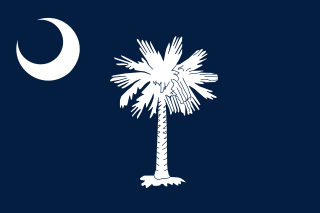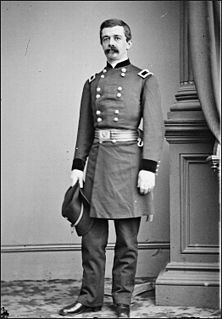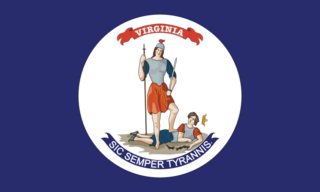History
Four cavalry companies were formed from June to December 1863, under the command of Colonel Lafayette C. Baker for service in the defenses of Washington, D.C.; in November it was transferred to the Department of Virginia and North Carolina. Eight companies which had been raised in Augusta, Maine were attached to the regiment in early 1864. The regiment participated in the Siege of Petersburg during the remainder of 1864 and early 1865.
In August 1864, seven companies were transferred to the 1st Maine Cavalry, while the rest of the regiment was consolidated into two companies. After fighting in the Appomattox Campaign, the regiment served in garrison roles in Virginia until mustering out on October 26, 1865.

XXII Corps was a corps in the Union Army during the American Civil War. It was created on February 2, 1863, to consist of all troops garrisoned in Washington, D.C., and included three infantry divisions and one of cavalry. Many of its units were transferred to the Army of the Potomac during Grant's Overland Campaign.

Hampton's Legion was an American Civil War military unit of the Confederate States of America, organized and partially financed by wealthy South Carolina planter Wade Hampton III. Initially composed of infantry, cavalry, and artillery battalions, elements of Hampton's Legion participated in virtually every major campaign in the Eastern Theater, from the first to the last battle.

The 6th South Carolina Cavalry Regiment was a regiment of cavalry in the Confederate States Army during the American Civil War. They were from the state of South Carolina and served at various times in both the Eastern and Western theaters.
Galvanized Yankees was a term from the American Civil War denoting former Confederate prisoners of war who swore allegiance to the United States and joined the Union Army. Approximately 5,600 former Confederate soldiers enlisted in the "United States Volunteers", organized into six regiments of infantry between January 1864 and November 1866. Of those, more than 250 had begun their service as Union soldiers, were captured in battle, then enlisted in prison to join a regiment of the Confederate States Army. They surrendered to Union forces in December 1864 and were held by the United States as deserters, but were saved from prosecution by being enlisted in the 5th and 6th U.S. Volunteers. An additional 800 former Confederates served in volunteer regiments raised by the states, forming ten companies. Four of those companies saw combat in the Western Theater against the Confederate Army, two served on the western frontier, and one became an independent company of U.S. Volunteers, serving in Minnesota.

Alfred Gibbs was a career officer in the United States Army who served as a brigadier general in the Union Army during the American Civil War.

Henry Eugene Davies was an American soldier, writer, public official and lawyer. He served in the Union Army as a brigadier general of volunteers in cavalry service during the American Civil War and was promoted to the grade of major general of volunteers at the end of the war. Davies was one of the few nonprofessional soldiers in the Union cavalry in the East to be promoted to the grade of general. He led his brigade in several major battles, especially during the Overland Campaign, the Battle of Trevilian Station, the Siege of Petersburg and the Appomattox Campaign at the end of the war.

The area that eventually became the U.S. state of Montana played little direct role in the American Civil War. The closest the Confederate States Army ever came to the area was New Mexico and eastern Kansas, each over a thousand miles away. There was not even an organized territory using "Montana" until the Montana Territory was created on May 26, 1864, three years after the Battle of Fort Sumter. In 1861, the area was divided between the Dakota Territory and the Washington Territory, and in 1863, it was part of the Idaho Territory.

The 4th South Carolina Cavalry Regiment was a regiment of cavalry in the Confederate States Army during the American Civil War. They were from the state of South Carolina and served primarily in the Eastern Theater of the American Civil War. The 4th South Carolina Cavalry Regiment was organized on December 16, 1862, by consolidating the 10th Battalion South Carolina Cavalry, the 12th Battalion South Carolina Cavalry, the Charleston Light Dragoons and Company A of the St. James Mounted Riflemen. The 10th Cavalry Battalion was organized in the spring of 1862 with five companies, and Major James P. Adams and Major William Stokes were the commanding officers. The 12th Cavalry Battalion had also been known as the 4th Cavalry Battalion.
The 1st Ohio Cavalry Regiment was a cavalry regiment that served in the Union Army during the American Civil War.

The 1st Virginia Cavalry Regiment was a cavalry regiment raised in Virginia for service in the Confederate States Army during the American Civil War. It fought mostly with the Army of Northern Virginia.
The 8th Maine Infantry Regiment was an infantry regiment that served in the Union Army during the American Civil War.
The 9th Maine Infantry Regiment was an infantry regiment that served in the Union Army during the American Civil War.
The 2nd Maine Cavalry Regiment was a cavalry regiment that served in the Union Army during the American Civil War.
The 1st Maine Sharpshooters Battalion was a sharpshooter battalion in the Union Army during the American Civil War.
The 1st New Hampshire Cavalry Regiment was a cavalry regiment that served in the Union Army during the American Civil War.

The 1st Regiment New York Mounted Rifles, sometimes designated 7th Regiment New York Volunteer Cavalry, was a cavalry regiment of the Union Army during the American Civil War.
The following list is a Bibliography of American Civil War Union military unit histories. More details on each book are available at WorldCat.
Alexander Calvin Elliott was a United States soldier who fought with the Union Army during the American Civil War as a sergeant with Company A of the 1st Pennsylvania Cavalry. He received his nation's highest award for valor, the U.S. Medal of Honor, for his actions at Paines Crossroads, Virginia on April 5, 1865. That award was conferred on May 3, 1865.
Edward Washburn Whitaker (1841–1922) was a Union Army officer during the American Civil War. He was awarded the Medal of Honor for gallantry in action in 1864.
This page is based on this
Wikipedia article Text is available under the
CC BY-SA 4.0 license; additional terms may apply.
Images, videos and audio are available under their respective licenses.







